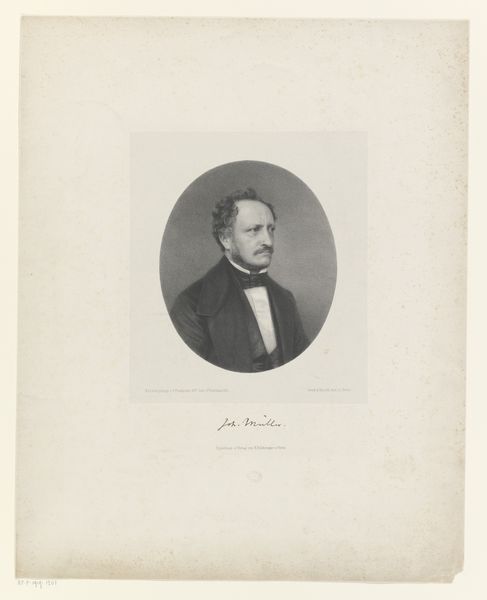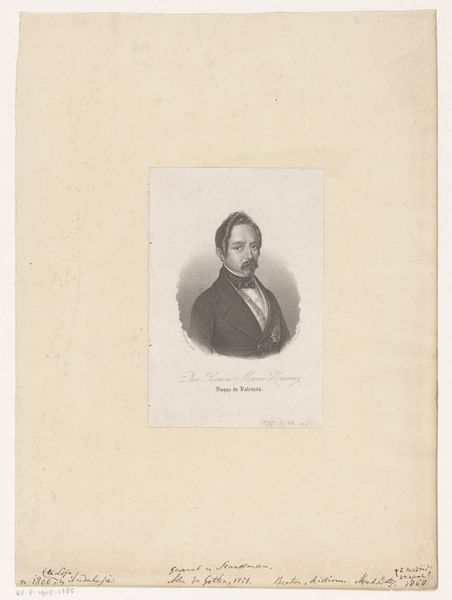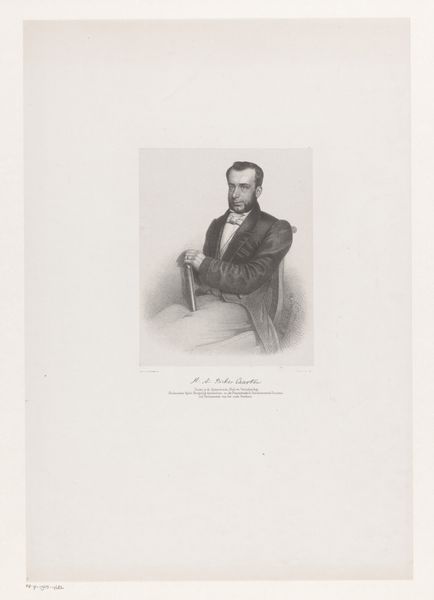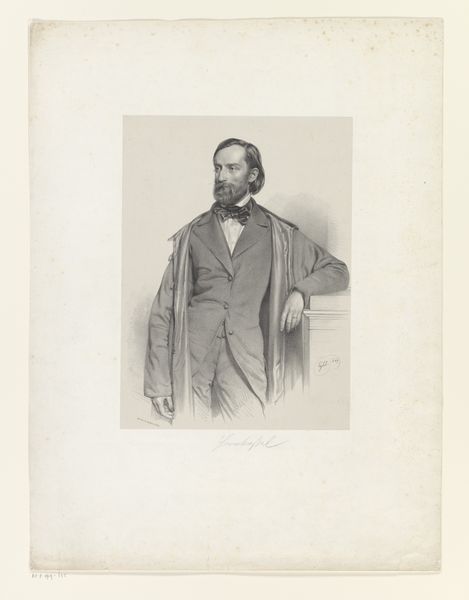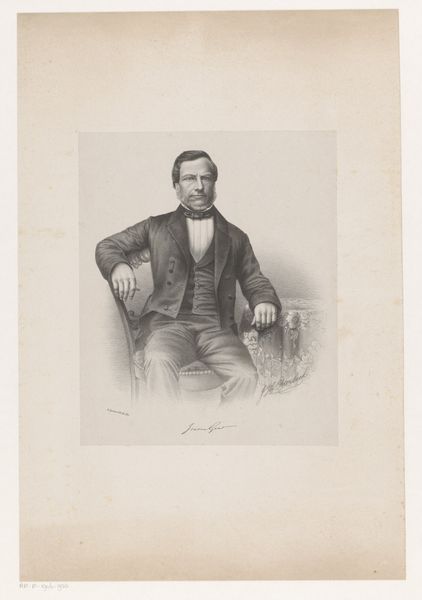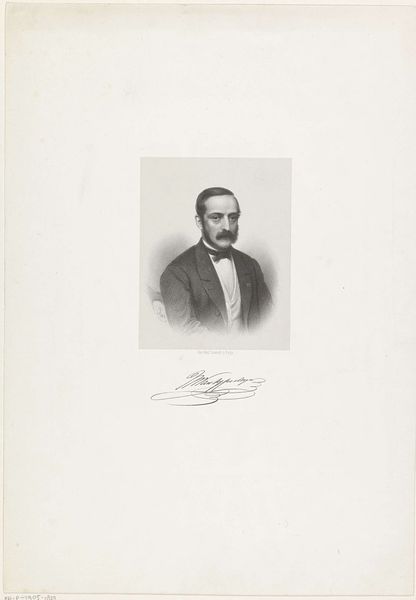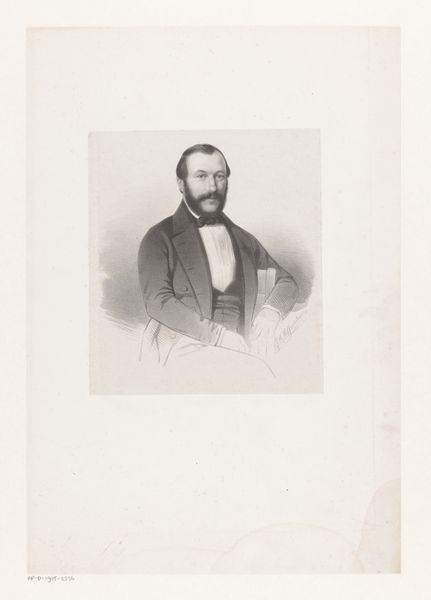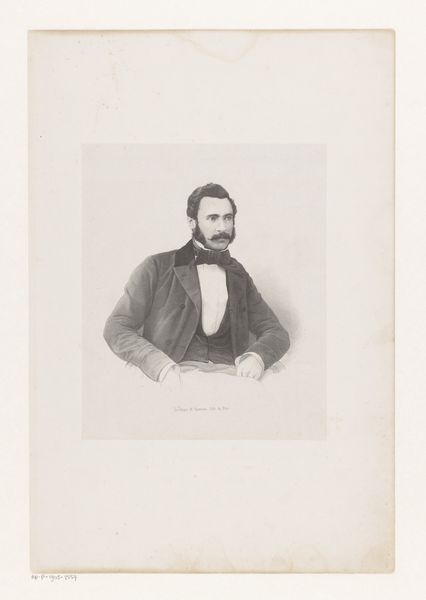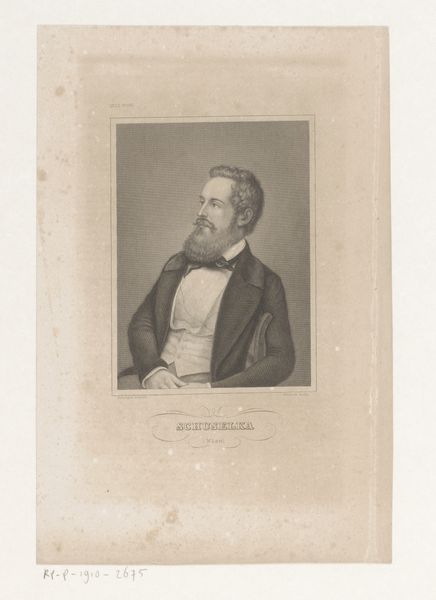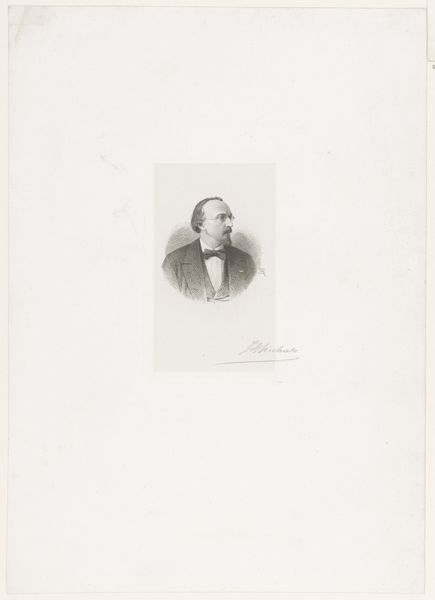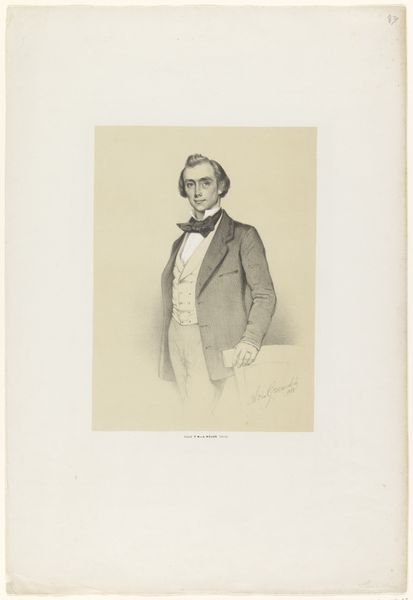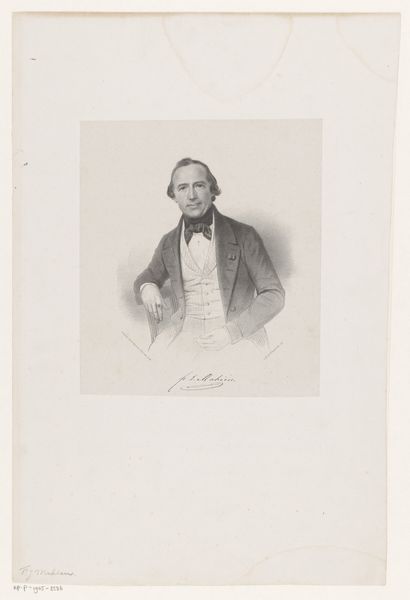
drawing, intaglio, paper, graphite
#
portrait
#
drawing
#
intaglio
#
old engraving style
#
paper
#
romanticism
#
graphite
#
history-painting
Dimensions: height 180 mm, width 131 mm
Copyright: Rijks Museum: Open Domain
Editor: This is "Portrait of Franz Trautmann," an intaglio drawing from sometime between 1827 and 1863, created by Lazarus Gottlieb Sichling. It has such a crisp, clean feel for something so old, and is a wonderful study in the contrasts of light and dark, but makes me curious about how it was created. What does this portrait suggest to you? Curator: To me, it speaks of labor and the rise of a certain class. Consider the materials: graphite, paper, intaglio—common materials, yes, but transformed through a process. This wasn’t simply sketching; it was the multiplication of imagery through printmaking. The social context is key. Editor: You're saying that the *how* is just as important as the *what*? Curator: Absolutely. The very act of creating multiple copies shifts the artwork’s meaning. This wasn’t solely about immortalizing Trautmann; it was about disseminating his image, about manufacturing fame and access, making it part of a broader visual culture. Think of the consumption of these images: Who could afford them? What did they signify to the buyer? Editor: That makes sense! So, the portrait becomes less about the individual and more about the mechanisms of its production and reception. Curator: Precisely. Consider the relationship between art and craft in the 19th century. Intaglio was often seen as craft, a reproductive medium. Elevating it to “high art” status raises questions about value, skill, and the artist's role in industrializing image-making. It reflects an evolving world of commerce and expanding means of representing important people, highlighting how techniques, rather than innate genius, democratize portraiture. Editor: This has totally changed my view! It is more than just a portrait; it's a reflection on how art is made, shared, and consumed in a changing society. Curator: Indeed. Seeing the image as a product of its material conditions and social circulation provides a richer, more nuanced understanding.
Comments
No comments
Be the first to comment and join the conversation on the ultimate creative platform.
